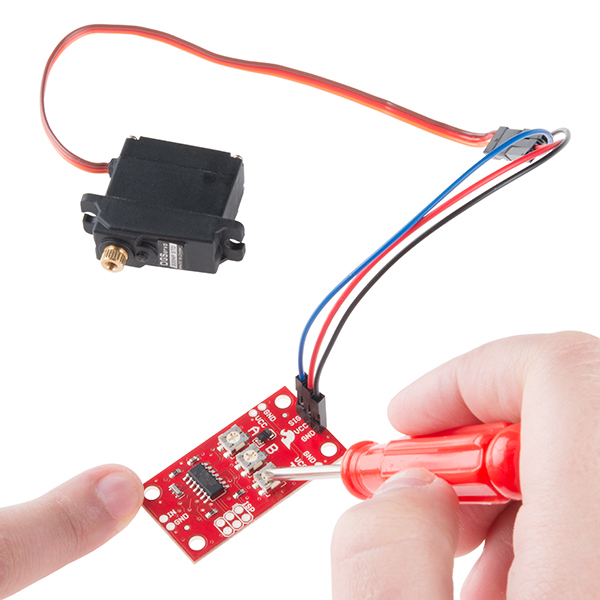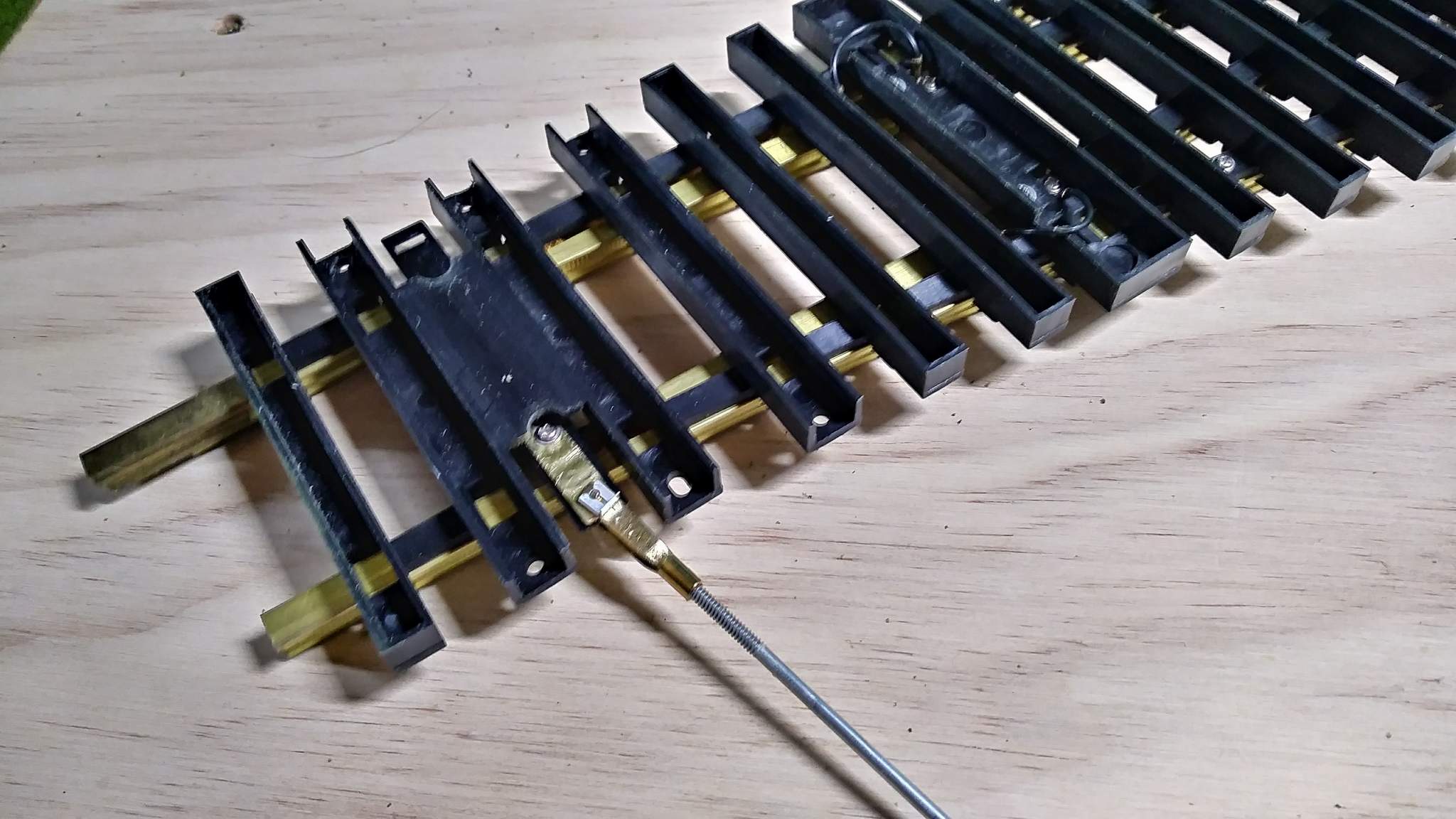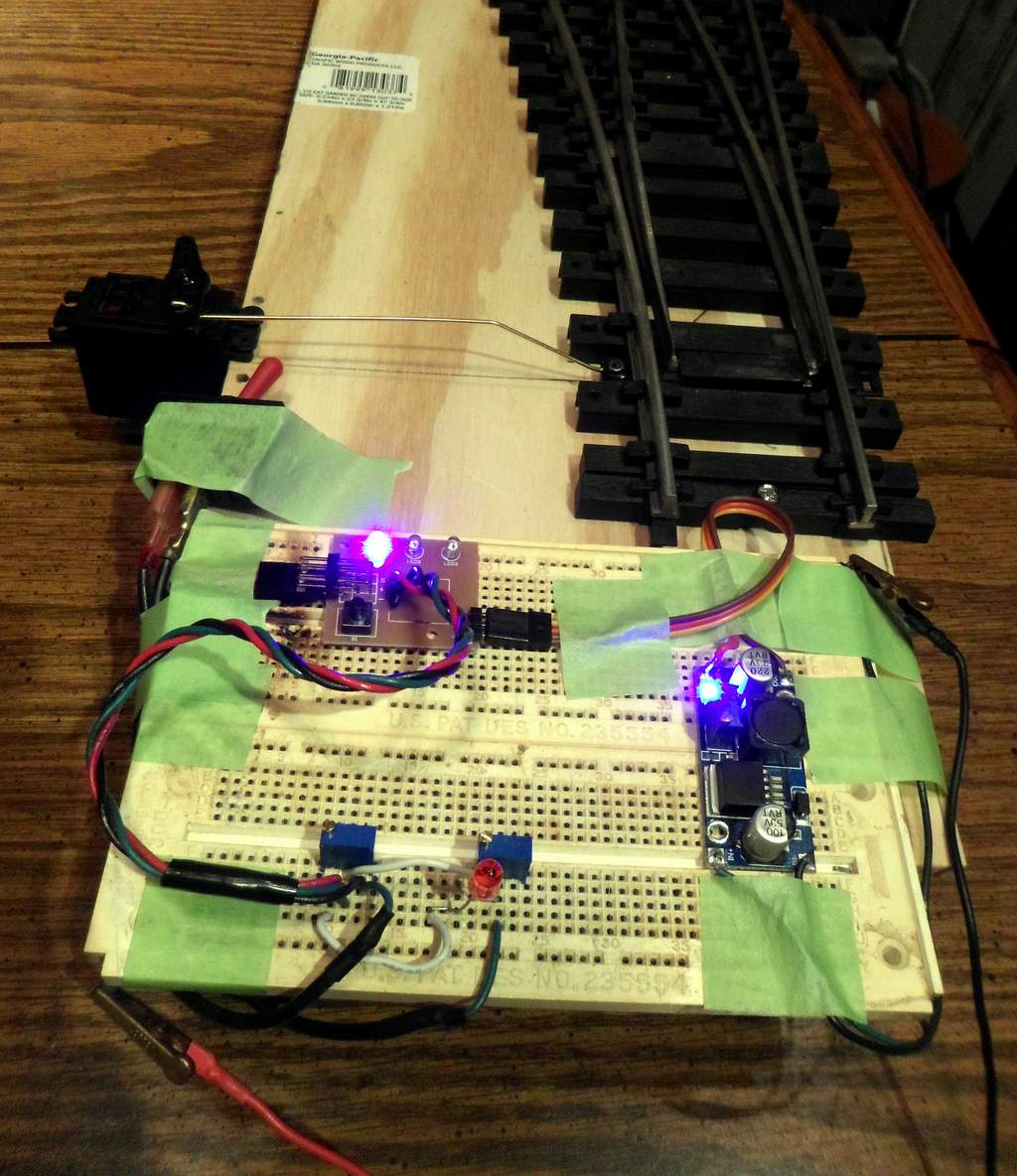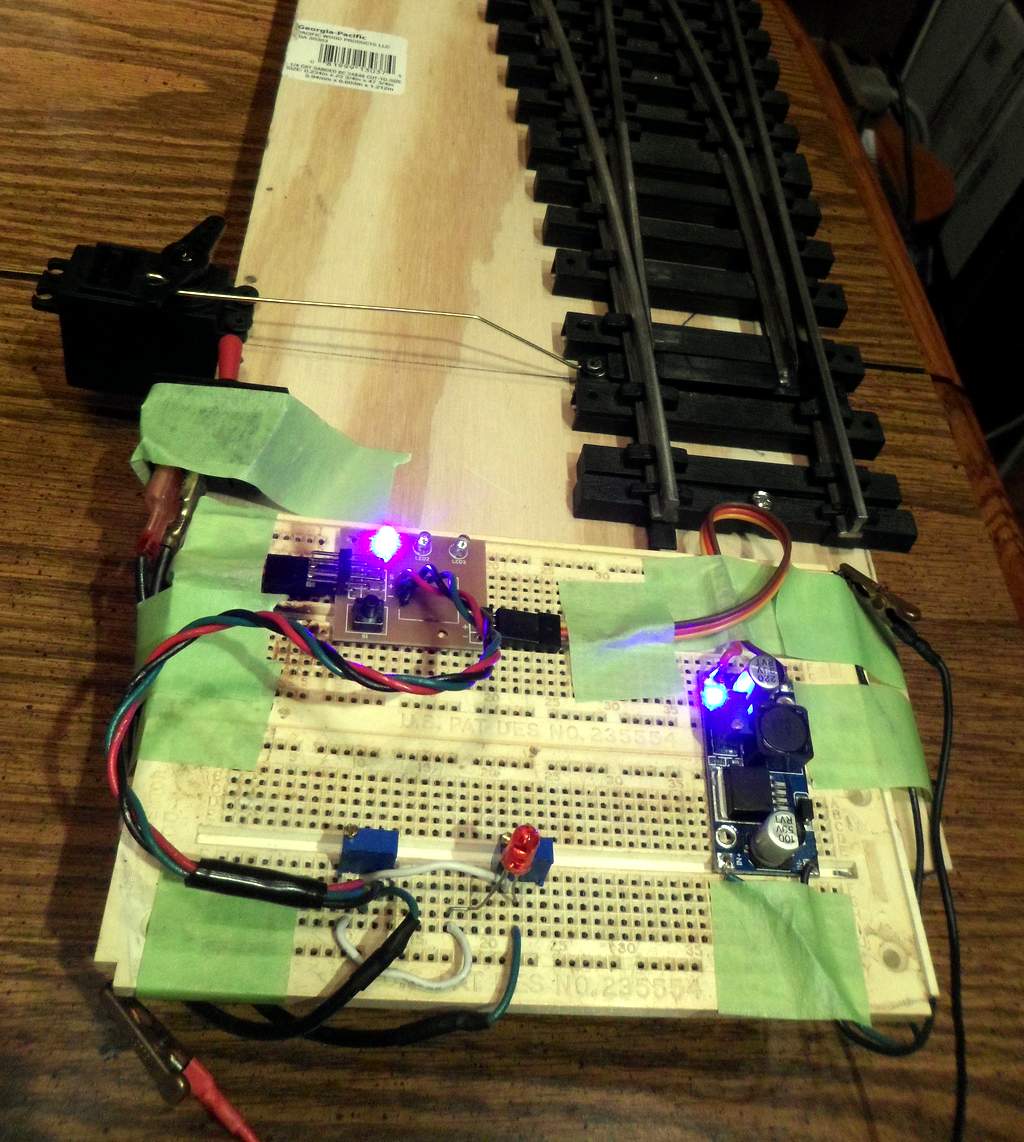I saw this project on Trainelectronics by Dave Bodnar http://trainelectronics.com/Servo-simple-controller/index.htm
Having one of the servo testers and some servos I decided to see if I could adapt it to my outside layout.
I have made a mock up of the controller and after a bit of experimenting in the shed with a test bed I put 2 servos out on the layout next to 1 set of LGB points and 1 set of Aristocraft points to see how they will go when I run a train through them.
If successful I will convert all my points to servo control.
I plan to put the controllers into a weatherproof enclosure and put a signal box over the top to disguise it.
My biggest worry was that the distance between the points I want to control and the controllers might be too large and the signal would degrade.
I made a 12 Ft long test cable and successfully changed a set of points over that distance.
As I have 2 signal boxes I will split the 12 sets of points I have into groups of 2 (6 controllers in each signal box).
The control switches will be weatherproof ones and mounted in enclosures with a lid.
Edit;
As the servo tester has outputs to control 3 servos at the same time, I have come up with the idea of using a second servo to move a semaphore signal so I can see which way the points are set at a glance.
I tested the idea on my bench set up and the second servo moved in time with the point driver.
Pictures of my test set up.






